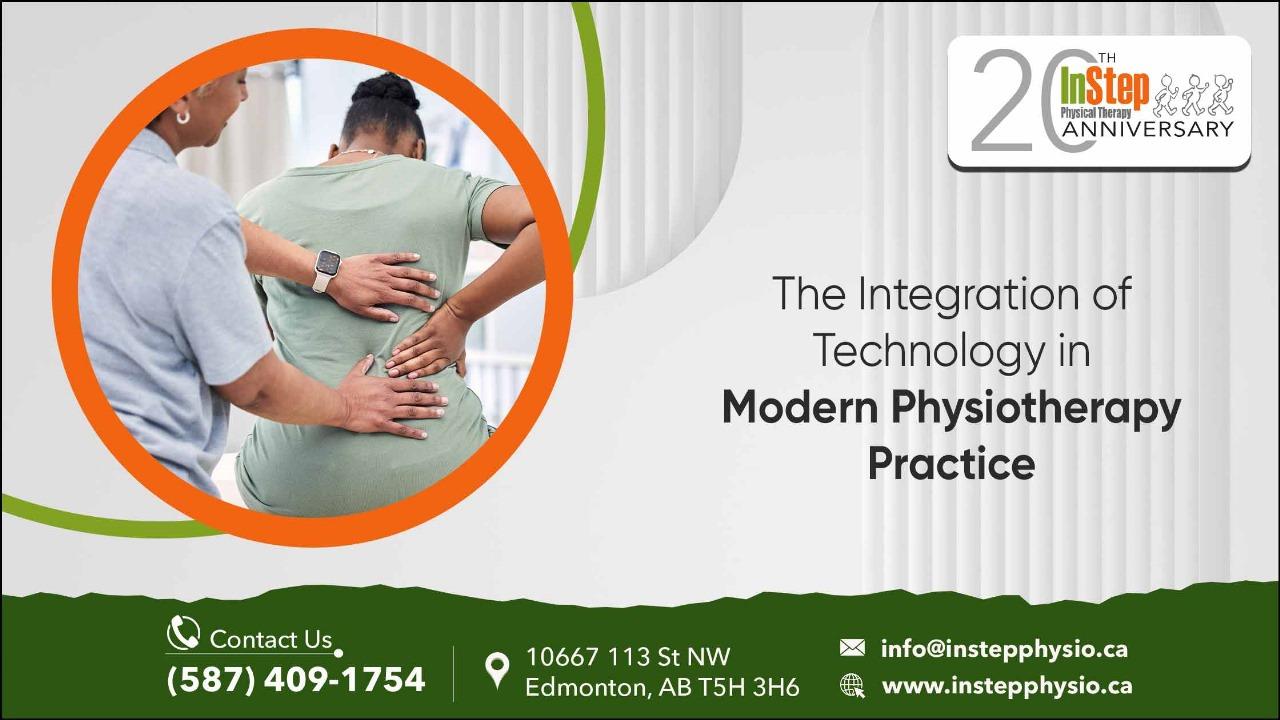Physiotherapy has been a cornerstone in the management of various musculoskeletal and neurological conditions. Its principles, centered around movement and function, have remained consistent over the years. However, as with many other medical disciplines, physiotherapy has not been immune to the waves of technological advancements. Physiotherapy, especially centers like In Step Physical Therapy Edmonton, has started integrating cutting-edge technologies into treatment regimens, delivering more precise, efficient, and patient-tailored interventions.
The Evolution of Physiotherapy through Technology
Historically, physiotherapy leaned heavily on manual techniques, exercises, and patient education. While these remain integral, technology has introduced tools that enhance diagnosis, treatment, and monitoring. Today's Edmonton physiotherapy clinics employ various technologies, from biofeedback systems and virtual reality to wearables and mobile applications, signaling a paradigm shift in the way therapy is administered.
Applications and Benefits
Diagnostic Tools
Modern devices offer physiotherapists detailed insights into a patient's condition. Tools such as digital gait analysis or electromyography provide data-driven bases for designing treatment plans.
Footmaxx brings precision to foot care, offering both custom orthotics and detailed foot analysis systems. This technology ensures a diagnostic precision that tailors foot care solutions to individual needs.
Virtual Reality (VR) and Augmented Reality (AR)
VR and AR are being used to simulate real-life activities, making rehabilitation exercises more engaging and relevant. It's especially beneficial in neurological rehabilitation, where recreating real-world scenarios can aid recovery.
Enhanced Mobility and Neurological Recovery
Bioness offers neuromodulation systems that optimize functional activity, helping patients regain mobility and independence.
The Bioness L300 is designed primarily to address foot drop, which is a common symptom experienced by individuals with conditions like multiple sclerosis, stroke, cerebral palsy, and traumatic brain injury. It uses functional electrical stimulation (FES) to stimulate the nerves responsible for lifting the foot. By doing so, it promotes a more natural and safe walking pattern.
The Bioness H200 is tailored for individuals who have hand paralysis or weakness due to conditions like stroke, brain injury, or spinal cord injury. This system is designed to reeducate and stimulate the muscles responsible for hand movement and function. It comprises a wireless orthosis that fits around the user's forearm and hand.
The Portable Neuromodulation Stimulator (PoNS) delivers neurostimulation that can enhance neural recovery in patients with neurological impairments. It aids in the rehabilitation of balance disorders and enhances neural recovery in patients with neurological damage.
Wearables and Sensors
Devices like smartwatches and posture-correcting wearables give real-time feedback to patients, ensuring exercises are done correctly. They can also monitor a patient's progress and adapt exercises accordingly.
Dorsavi uses wearable sensors to analyze body movement and muscle activity in real-time. It enables objective assessment of movement dysfunctions and offers insights into workplace ergonomics to prevent injuries. It is also useful in sports physiotherapy to optimize performance. This enables the therapists to craft highly individualized treatment plans based on real-time movement data.
Tele-rehabilitation Platforms
In an age where online consultation has become the norm, physiotherapy has adapted. These platforms allow for remote consultations, ensuring continuity of care.
Challenges in Implementing New Technologies
- Training and Upskilling: Ensuring physiotherapists are adequately trained to use the new technologies.
- Cost Implications: The high initial cost of acquiring and maintaining cutting-edge technologies.
- Patient Adaptability: Ensuring patients, especially older individuals, are comfortable with the new technological tools.
- Data Privacy Concerns: Handling and storing patient data in a secure manner.
While technology in physiotherapy in Edmonton is promising, it's essential to recognize and navigate potential pitfalls. Reliability of devices and ensuring technology complements rather than replaces human touch are crucial considerations.
The Role of Physical Therapy in Technological Integration
Physical Therapy stands at the forefront of this technological integration. By embracing these advancements, it has demonstrated a commitment to holistic, state-of-the-art care. It offers a blend of traditional physiotherapeutic interventions with technology-driven methods, ensuring patients receive the best of both worlds.
A Future-forward Vision in Physiotherapy
The harmonious melding of technology and physiotherapy has proven not just advantageous but essential. The progressive strides made by Edmonton physiotherapy centers like In Step Physical Therapy Edmonton showcase a commitment to leveraging modern innovations for optimal patient outcomes. The confluence of smart equipment, data analytics, remote monitoring, and more doesn't just enhance treatment efficiency—it revolutionizes the very essence of patient care.
However, with these advancements comes the paramount responsibility of ensuring ethical use, patient privacy, and data security. As practitioners and patients together embark on this technologically augmented journey, it's crucial to remember the core ethos of physiotherapy: to heal, rehabilitate, and improve the quality of life. Technology, in its essence, serves as a tool to amplify this mission, ensuring that treatments are not only effective but also personalized, accessible, and forward-thinking.
In conclusion, while technology continues to redefine the horizons of what's possible within physiotherapy Edmonton, the heart of the profession remains constant: a dedication to the well-being and progress of every individual. As centers like In Step Physical Therapy Edmonton continue to lead the charge, we can remain hopeful for a future where technology and human touch work in tandem, bringing forth the best outcomes for all patients.
Also read about:
Revitalize Your Body A Comprehensive Guide to Physiotherapy
Orthopedic Physiotherapy How It Enhances Musculoskeletal Health and Why It Matters
How does physiotherapy contribute to chronic pain management

